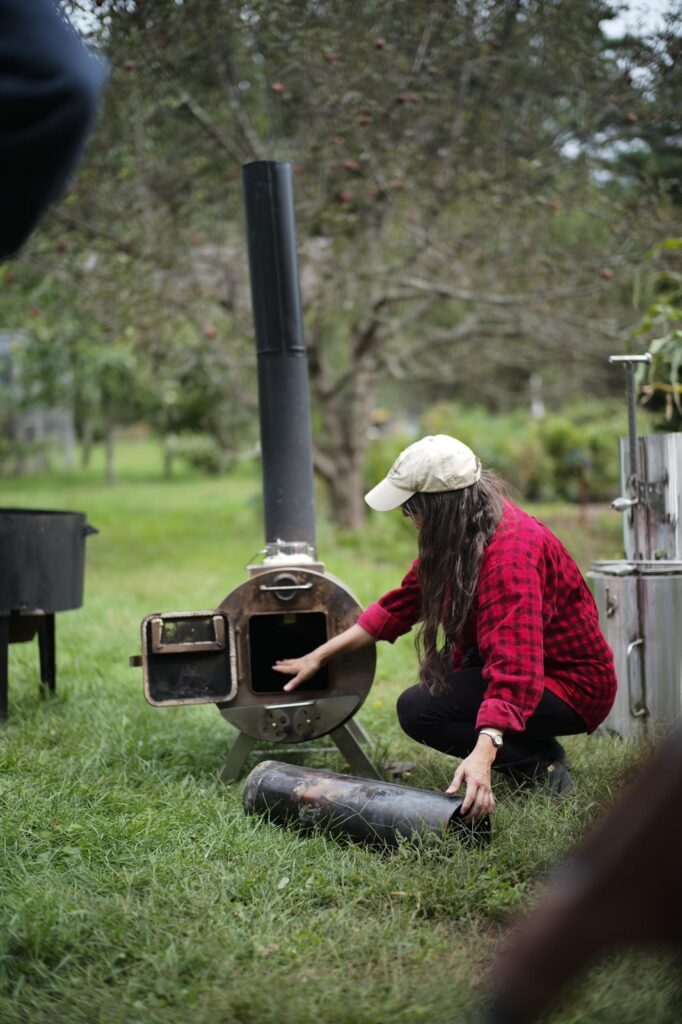
White Feather Farm (WFF), located in the Hudsen Valley (Saugerties, NY) is a beautiful and bountiful farm growing more than 80 varieties of fruits & vegetables, many of which are donated to a local food pantry. It is a non-profit farm doing research and providing education on a wide variety of topics, one of which is biochar.
Their next-door neighbor is Rothe Lumber. Together they are solving the lumber yard’s excess organic waste problem and the farm’s dearth of organic matter in their soils. Their solution is using a massive pyrolysis machine called a Carbonator which converts much of the unusable tree residues, including tree root balls which are notoriously challenging to manage, into biochar.
WFF hosted a demonstration during Climate Week to showcase not only the Carbonator, but other smaller kilns which can be used (and I brought along a few including the one pictured below made by High Plains Biochar). They also demonstrated the growing number of ways they are using and testing biochar on their farm.
Yours truly showing how this High Plains Biochar Kiln works. Photo courtesy of Benjamin Von Wong.
Raw, chunky biochar is combined with compost in a GeoBin helping the pile to get hotter as well as to charge the biochar with various nutrients and microbial life. In roughly 2 months the compost is done and top dressed onto their veggie fields. Farm manager Dallas McCann and Bill Hilgendorf who manages most of the biochar side of things, say that results to date have been fantastic as their silty soils have been a challenge in the past.
Dallas and Bill demonstrated how WFF is putting raw biochar deep into the subsoil in their hoop houses using a broad fork. Normally raw biochar is not recommended as it tends to scavenge nutrients needed by crops but adding it at the end of the growing season should allow the biochar to soak up excess nutrients and fill up its nooks and crannies with ‘wee beasties’ over the winter.
Another research project under way is using raw biochar to filter pond water in hopes of keeping algal growth low. They will be testing the saturated biochar to see if it has harvested excess nutrients from the pond and then testing the pond charged biochar in the next growing season. Should results be promising they will scale up to a more meaningful filtration system.
One last experiment we learned about is the possible use of biochar to control their recently arrived jumping worms, an invasive species of worm that can devour organic matter in soils leaving behind depleted soils that look like coffee grounds. There has been some early research suggesting that abrasive materials such as biochar or diatomaceous earth may create a less than ideal environment for these slithering, slimy invertebrates.


